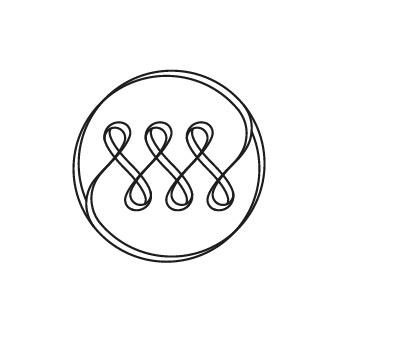Research Question & Secondary Questions
Primary Question
The meta-question of this research is fleshed out through each sub-question that challenges the Design Taxonomy—provoking profound discussions, synergies, and ultimately a call to action towards Autonomous Design in a future crisis scenario.
Key problematics to address in the Design Taxonomy’s secondary questions:
· The future of the planet when Ecology collapses.
· The Technological and Scientific disruption in the world.
· Human Ability to confront various crises with fortified mindsets and skills.
Secondary Questions
These are the 12 questions assigned to each concept and clustered in 3 domains for the Design Taxonomy, this is explained further in the Method.
Characters:
Infinite Learner.
- How can design collaborate with multiple science fields to incorporate knowledge and experiences from different stakeholders?
- How can design collaborate with multiple science fields to incorporate knowledge and experiences from different stakeholders?
Sufferer.
- How can designers foster empathy, conviviality, and inclusion between humanity and other organisms to thrive?
- How can designers foster empathy, conviviality, and inclusion between humanity and other organisms to thrive?
Comfortable Disruptor.
- Can a new breed of designers be taught to design better mindsets with the help of breakthrough technologies?
- Can a new breed of designers be taught to design better mindsets with the help of breakthrough technologies?
Human Hacker.
- How can designers influence society to create a positive impact?
- How can designers influence society to create a positive impact?
SYSTEMS:
Open Structures.
- Can design systems create poietic networks for a reconstructive transition?
- Can design systems create poietic networks for a reconstructive transition?
Value Formulation.
- Can design communicate ‘meaning’ through speculation and multiple constraints?
- Can design communicate ‘meaning’ through speculation and multiple constraints?
ReBuilding.
- Could design develop methods to construct social, economic, political, and environmental universality?
- Could design develop methods to construct social, economic, political, and environmental universality?
Automated Traffic.
- Can design education be shifted to undertake ‘wicked problems’ daring humankind in the following decades?
- Can design education be shifted to undertake ‘wicked problems’ daring humankind in the following decades?
SPACES:
Worlding.
- Can design assist in the creation and restoration of "worlds inside worlds"?
- Can design assist in the creation and restoration of "worlds inside worlds"?
Safe Space.
- Can design elaborate from a secular code of ethics to assist diversity and improve design agency?
- Can design elaborate from a secular code of ethics to assist diversity and improve design agency?
Poli Nation.
- Can design be a strategic approach to global issues with local actions?
- Can design be a strategic approach to global issues with local actions?
House on Fire.
- How can design improve mental stamina to surpass the future crisis-era?
- How can design improve mental stamina to surpass the future crisis-era?
Hypothesis
The Tangible Entangle - Method
Design is expanding and absorbing knowledge from multiple fields. The integration and correlation of these concepts are essential to confronting future challenges in the ecological, technological, and social domains. "We have entered the Age of Entanglement" (Hillis, 2010, p. 93), and the relationships between these concepts are complex to control and challenging to comprehend fully.
This capstone entails collecting, naming, and relating available knowledge from various research, theories, and methods. The purpose of organizing these concepts is to understand and apply them to different problematics in future scenarios. The final output will be a list of terms or vocabulary (White, 2016), which can develop further when deployed in design education.
The Tangible Entangle is a compendium of valuable information and relevant issues. It provides articulation through a Design Taxonomy to address the primary question of this research; how can design assist in radical times for the world ́s future crisis?
Design Taxonomy
The word Taxonomy comes from the Greek -taxis, which means arrangement or division and -nomia, which means distribution (Rouse, 2016). The concept of Taxonomy was coined by the French in the 1700s to classify organisms in biology. Today, taxonomies are used continuously and thoroughly in many contexts. They serve to organize different groups of concepts in various sciences and disciplines; design is no exception.
This Design Taxonomy has three domains -characters, spaces, and systems. The intention of organizing the three fields is to classify, categorize, and poetics (Rolfe, 2017). The synergies, connections, and echoes from such classification will expand the scope of the hypothesis.
This Taxonomy has no order, sequence, or defined structure. The reason for this flexibility is to provide the reader with adaptable vocabulary and concepts subtly communicating with each other.
The card deck also provided alongside this work is a tool designed for educational and practical purposes. The characters, systems, and spaces presented should reflect in different contexts and apply to various design challenges.
Please continue to the Design Taxonomy of this Study.
References:
· Hillis, D. (2010). The Age of Digital Entanglement. Scientific American, p. 93.
· Rolfe, A. (2017). The Heavenly Emporium of Benevolent Knowledge. Western Sydney University.
· Rouse, M. (2016). What is taxonomy? - Definition from WhatIs.com. Retrieved from https://searchcontentmanagement.techtarget.com/definition/taxonomy.
· White, B. (2016). The 4 Steps to Designing an Effective Taxonomy: #1 Design a User-Centric Taxonomy. Retrieved from https://enterprise-knowledge.com/the-4-steps-to-designing-an-effective-taxonomy-1-design-a-user-centric-taxonomy/.
· Hillis, D. (2010). The Age of Digital Entanglement. Scientific American, p. 93.
· Rolfe, A. (2017). The Heavenly Emporium of Benevolent Knowledge. Western Sydney University.
· Rouse, M. (2016). What is taxonomy? - Definition from WhatIs.com. Retrieved from https://searchcontentmanagement.techtarget.com/definition/taxonomy.
· White, B. (2016). The 4 Steps to Designing an Effective Taxonomy: #1 Design a User-Centric Taxonomy. Retrieved from https://enterprise-knowledge.com/the-4-steps-to-designing-an-effective-taxonomy-1-design-a-user-centric-taxonomy/.
